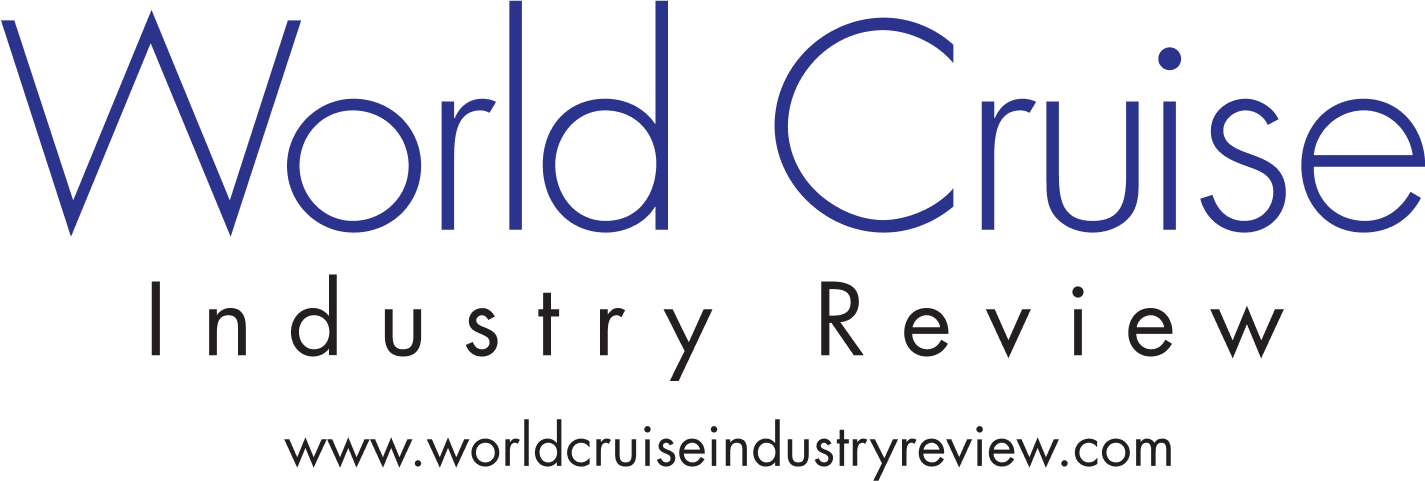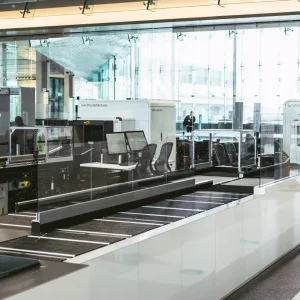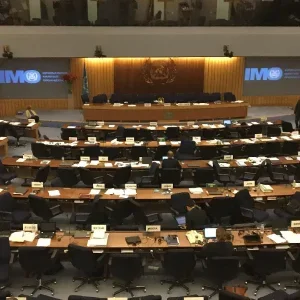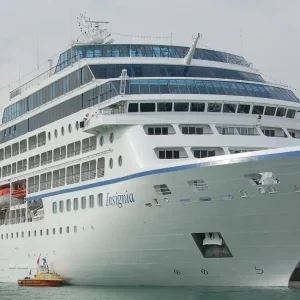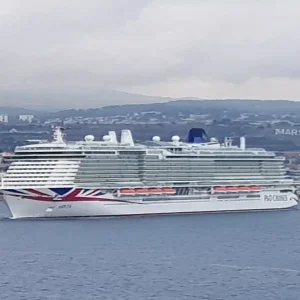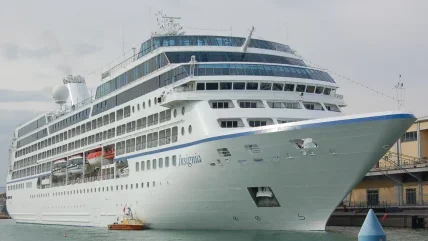
Targets GHG Intensity Reduction of 10% by 2026 and 25% by 2030 compared to 2019
Revamps Climate Action Strategy with Focus on Efficiency, Innovation and Collaboration
Norwegian Cruise Line Holdings Ltd. (NYSE:NCLH) (the “Company”), a leading global cruise company which operates Norwegian CruiseLine, Oceania Cruises and Regent Seven Seas Cruises, today launched its revampedclimate action strategy along with short- and near-term greenhouse gas (“GHG”) targets tosupport the Company’s ambitious pursuit of net zero by 2050. These actions underscore theCompany’s robust commitment to decarbonization as part of its global sustainabilityprogram, Sail & Sustain.
Key components of the Company’s new interim GHG reduction targets include:
Reduce GHG intensity by 10% by 2026 and 25% by 2030, compared to a 2019baseline with intensity measured on a per Capacity Day1 basis.
The targets cover the Company’s emissions from its fleet of ships, islands and facilities(Scopes 1 & 2) as well as upstream fuel- and energy-related activities, including well-to-tank emissions (portion of Scope 3). As such, the targets will capture the full well-to-wake emissions impact of the Company’s fuel consumption.
Interim targets provide a roadmap to support the Company’s existing net zero by 2050ambition. The scope of this commitment expands to the Company’s entire greenhousegas footprint, including its vast network of suppliers and partners across its valuechain.
“We are proud to further refine and strengthen our climate action strategy and commitmentsincluding by setting milestone GHG intensity reduction targets which will guide us on ourambitious pursuit of net zero by 2050,” said Harry Sommer, president and chief executiveofficer-elect of Norwegian Cruise Line Holdings Ltd. “Every aspect of our business fromshoreside to shipboard is responsible for doing their part to design, deliver and demonstrateresults for decarbonization and our Board of Directors has reinforced this expectation byestablishing shared accountability and tying incentives for our entire management team tothis critical effort. We also recently took an important step forward on our pursuit of net zeroby announcing the modification of two of our future Prima Class newbuilds to accommodatethe use of green methanol in the future.”
Sommer continued, “We are also activating and mobilizing our full network of teammembers, ports and destinations, suppliers and partners, and guests to act now and join us
on this transformative journey, further amplifying the efforts we could achieve on our own.”
The Company’s revamped climate action strategy is centered around three pillars: Efficiency,Innovation and Collaboration.
Efficiency
The Company is focused on optimizing efficiency for its existing fleet which can have animmediate impact to onboard power consumption and GHG emissions as well as generatefuel savings. This includes both ongoing investments in systems and technologies, such asHVAC system upgrades and waste heat recovery systems, as well as operationalenhancements, such as smart itinerary and voyage planning and optimization of hoteloperations. Operational changes require data, education and accountability, therefore theCompany is also building and investing in internal systems and processes to enable its teammembers, and even guests, to operate its ships with optimal efficiency.
Innovation
The Company is innovating for long-term solutions and technologies, including those thatsupport the ability to operate on green fuels. Since 2022, the Company has successfullycompleted tests of biofuel blends on multiple ships, in which a blend of approximately 30%biofuel and 70% marine gas oil has been used. The Company believes biodiesel is a viabletransition fuel that can support the decarbonization journey as long-term solutions are testedand scaled. Longer-term, the Company views green methanol as a promising solution andrecently announced the modification of the final two Prima Class ships, expected to bedelivered in 2027 and 2028, to accommodate the use of green methanol as an alternativefuel source in the future. While additional modifications will be needed in the future to fullyenable the use of methanol in addition to traditional marine fuel on these ships, thisreinforces the Company’s commitment to decarbonization. The use of green methanol wouldresult in a drastic reduction in emissions, including an up to 95% reduction in CO2, and itsproperties enable the continued use of conventional fuel storage and bunkering with fewermodifications compared to other emerging fuels in the market at this time. However, theproduction of green methanol is still in the early stages and will require continuedinvestments to sufficiently scale for distribution and consumption globally.
Collaboration
The pathway to net zero will be complex and will require significant collaboration across theCompany’s network of stakeholders including suppliers, communities, governments andNGOs to collectively partner and find solutions to combat climate change. The Company iscontinuously exploring partnerships to champion efforts surrounding the development ofgreen fuels along with the global infrastructure to produce, store and distribute these fuels.The Company also views cross-sector collaboration as a catalyst for effective andaccelerated change and is an active member in industry associations, such as the MethanolInstitute, and regional forums. For example, the Company is a first mover partner of thePacific Northwest to Alaska Green Corridor, a collaborative effort between ports,governments and cruise operators in the region, to explore a maritime green corridor aimedat accelerating the deployment of zero GHG emission ships and operations between Alaska,British Columbia, and Washington. In addition, the Company continues to actively partnerwith key ports to accelerate the use of shore power technology which allows cruise ships toconnect to onshore electrical power grids to supply much of the power needed while docked.While the land-based infrastructure expansion is underway, the Company is also equipping
its ships with the technology needed to plug-in, targeting to have approximately 70% of itsfleet equipped by 2025.
“We are encouraged to see the significant progress and momentum across sectors todecarbonize, but fundamental challenges continue to exist for the cruise industry to fullydecarbonize by 2050,” said Jessica John, vice president of ESG, Investor Relations andCorporate Communications of Norwegian Cruise Line Holdings Ltd. “Rather than waiting forthese challenges to dissolve, our strategy is about acting now to implement solutions forefficiency today, innovate for future solutions and collaborate with our stakeholders along theway. Underpinning this strategy is good governance and effective risk management as wework to advance our climate action efforts and build our Company’s resilience.”
To learn more, watch a video highlighting the Company’s climate action strategy and targetshere and visit our website here for more information.
About Norwegian Cruise Line Holdings Ltd.
Norwegian Cruise Line Holdings Ltd. (NYSE: NCLH) is a leading global cruise companywhich operates the Norwegian Cruise Line, Oceania Cruises and Regent Seven SeasCruises brands. With a combined fleet of 29 ships with over 60,000 berths, these brandsoffer itineraries to approximately 500 destinations worldwide. The Company has eightadditional ships scheduled for delivery through 2028, comprising over 20,000 berths.
About Sail & Sustain
Sail & Sustain is Norwegian Cruise Line Holdings’ global sustainability program centeredaround its commitment to drive a positive impact on society and the environment whiledelivering on its vision to be the vacation of choice for everyone around the world. Thisprogram is structured around five pillars developed through cross-functional collaborationwith key internal and external stakeholders. The pillars include: Reducing EnvironmentalImpact, Sailing Safely, Empowering People, Strengthening our Communities and Operatingwith Integrity and Accountability.
Cautionary Statement Concerning Forward-Looking Statements
Some of the statements, goals and targets contained in this release are “forward-lookingstatements” within the meaning of the U.S. federal securities laws intended to qualify for thesafe harbor from liability established by the Private Securities Litigation Reform Act of 1995.All statements other than statements of historical facts contained, or incorporated byreference, in this release, including, without limitation, those regarding our business strategy,financial position, results of operations, plans, prospects, objectives of management forfuture operations (including those regarding expected fleet additions and plans, goals ortargets for our sustainability program and decarbonization efforts) are forward-lookingstatements. Many, but not all, of these statements can be found by looking for words like“expect,” “anticipate,” “goal,” “project,” “plan,” “believe,” “seek,” “will,” “may,” “target,”“estimate,” “intend,” “future” and similar words. Forward-looking statements do not guaranteefuture performance and may involve risks, uncertainties and other factors which could causeour actual results, performance or achievements to differ materially from the future results,performance or achievements expressed or implied in those forward-looking statements.Examples of these risks, uncertainties and other factors include, but are not limited to theimpact of: adverse general economic factors, such as fluctuating or increasing levels ofinterest rates, inflation, unemployment, underemployment and the volatility of fuel prices,
our actual or perceived failure to comply with requirements regarding data privacy andprotection; changes in fuel prices and the type of fuel we are permitted to use and/or othercruise operating costs; mechanical malfunctions and repairs, delays in our shipbuildingprogram, maintenance and refurbishments and the consolidation of qualified shipyardfacilities; the risks and increased costs associated with operating internationally; our inabilityto recruit or retain qualified personnel or the loss of key personnel or employee relationsissues; our inability to obtain adequate insurance coverage; pending or threatened litigation,investigations and enforcement actions; volatility and disruptions in the global credit andfinancial markets, which may adversely affect our ability to borrow and could increase ourcounterparty credit risks, including those under our credit facilities, derivatives, contingentobligations, insurance contracts and new ship progress payment guarantees; any furtherimpairment of our trademarks, trade names or goodwill; our reliance on third parties toprovide hotel management services for certain ships and certain other services; fluctuationsin foreign currency exchange rates; our expansion into new markets and investments in newmarkets and land-based destination projects; overcapacity in key markets or globally; andother factors set forth under “Risk Factors” in our most recently filed Annual Report on Form10-K and subsequent filings with the Securities and Exchange Commission. It is not possibledeclines in the securities and real estate markets, and perceptions of these conditions thatdecrease the level of disposable income of consumers or consumer confidence; the spreadof epidemics, pandemics and viral outbreaks, including the COVID-19 pandemic, and theireffect on the ability or desire of people to travel (including on cruises), which is expected tocontinue to adversely impact our results, operations, outlook, plans, goals, growth,reputation, cash flows, liquidity, demand for voyages and share price; implementingprecautions in coordination with regulators and global public health authorities to protect thehealth, safety and security of guests, crew and the communities we visit and to comply withregulatory restrictions related to the pandemic; our indebtedness and restrictions in theagreements governing our indebtedness that require us to maintain minimum levels ofliquidity and be in compliance with maintenance covenants and otherwise limit our flexibilityin operating our business, including the significant portion of assets that are collateral underthese agreements; our ability to work with lenders and others or otherwise pursue options todefer, renegotiate, refinance or restructure our existing debt profile, near-term debtamortization, newbuild related payments and other obligations and to work with credit cardprocessors to satisfy current or potential future demands for collateral on cash advancedfrom customers relating to future cruises; our need for additional financing or financing tooptimize our balance sheet, which may not be available on favorable terms, or at all, and ouroutstanding exchangeable notes and any future financing which may be dilutive to existingshareholders; the unavailability of ports of call; future increases in the price of, or majorchanges, disruptions or reduction in, commercial airline services; changes involving the taxand environmental regulatory regimes in which we operate, including new regulations aimedat reducing greenhouse gas emissions; the accuracy of any appraisals of our assets as aresult of the impact of the COVID-19 pandemic or otherwise; our success in controllingoperating expenses and capital expenditures; trends in, or changes to, future bookings andour ability to take future reservations and receive deposits related thereto; adverse eventsimpacting the security of travel, or customer perceptions of the security of travel, such asterrorist acts, armed conflict, such as Russia’s invasion of Ukraine, and threats thereof, actsof piracy, and other international events; adverse incidents involving cruise ships; breachesin data security or other disturbances to our information technology and other networks orto predict or identify all such risks. There may be additional risks that we consider immaterialor which are unknown. The above examples are not exhaustive and new risks emerge fromtime to time. Such forward-looking statements are based on our current beliefs,assumptions, expectations, estimates and projections regarding our present and futurebusiness strategies and the environment in which we expect to operate in the future. These
forward-looking statements speak only as of the date made. We expressly disclaim anyobligation or undertaking to release publicly any updates or revisions to any forward-lookingstatement to reflect any change in our expectations with regard thereto or any change ofevents, conditions or circumstances on which any such statement was based, except asrequired by law.
